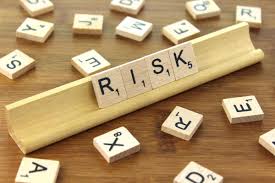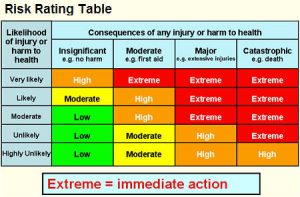 Risks are inherent in every situation and are defined in different ways, depending on the field or industry they occur in. The most common definition of this would be that risks are undesirable outcomes or uncertainty. A risk is an uncertain event that will have an effect on how objectives will be achieved. It also refers to the possibility that projects will not be achieved because of unexpected occurrences. Similarly, it could also mean that projects will not be achieved because something necessary did not happen.
Risks are inherent in every situation and are defined in different ways, depending on the field or industry they occur in. The most common definition of this would be that risks are undesirable outcomes or uncertainty. A risk is an uncertain event that will have an effect on how objectives will be achieved. It also refers to the possibility that projects will not be achieved because of unexpected occurrences. Similarly, it could also mean that projects will not be achieved because something necessary did not happen.
Risks are more highly possible if the following situations are present:
- The team’s project technology is new
- The organization and its members’ experience and exposure to similar projects is low
- The time between planning the project and actually starting it is longer than usual
- The length of time to finish the project is long
Risk management process is important
Since risks are inherent in every situation, risk management should be implemented by all teams to mitigate and manage risks. Having the right risk management process allows teams to identify and deal with risks in a timely and thorough manner.
Risk management should not just be a reaction to uncertainty but a part of the project’s planning process. This is because it allows teams to anticipate the risks that may occur in a project and plan how to manage it. It is important for teams to foresee risks long before they turn into reality when they are called ‘issues’.
Risk management processes differ, depending on the size of the project. Large-scale projects require more detailed and extensive planning and mitigation strategies. For small-scale projects, it may simply mean a prioritized list of risks.
How to manage risks in project management
Here are some helpful ways to manage risks in project management.
- Start a risk register. This should always be the first step in risk management. As already said, risk management processes should be a part of the planning stage. It is important for teams to start a risk register which can be as simple as a spreadsheet. Here, teams can include fields for risk description, date of risk, impact, owner, action, risk response, and status. This will help members determine and keep track of the risks that may occur in their projects.

Sample Risk Register
- Identify the risks. This early, teams should be meeting with their stakeholders to brainstorm on all possible and current risks on their projects. After that, they should go through all the factors related to the completion of the projects. Teams should also reach out to their stakeholders and ask if there are any concerns or potential problems that they have. Identifying risks should have a wide coverage to include technology, budget, materials, people, suppliers, quality, and legislation, among others. This step should also determine the team and stakeholders’ tolerance for risks. They should answer the question of how much risk they can take on before deciding to discard the project.
- Decide which risks to manage and which ones to ignore. There will be a lot of risks when it comes to project management. But not all of them are going to be worth the time and attention. It is, then, important for teams to gauge if a certain risk and its impact can be neglected. Say, for example, a risk that can only add $500 to a $10 million project may be ignored.
- Don’t skip the opportunities. Teams and stakeholders should remember that risks are not always negative. Sometimes, risks are positive and offer opportunities. For example, a team organizes an open house for their village project where the attendance is higher than expected. This is a good opportunity for introducing their projects. How can they manage that? How can they make sure everyone is accommodated? Positive risks like this should also be considered and prepared for.
- Establish its likelihood of occurring and its possible impact. During brainstorming, teams will discover numerous risks but not all of these will occur. How, then, can they choose which risks to prepare for? To answer, teams should rate the likelihood of occurrence of each of these risks and rate them on a scale of 1-5. Also, they should determine the impact of these risks should they occur.
- Prepare the action. After the likelihood of occurrence is determined, teams now need to focus on those that are most likely to happen, as well as on those with the highest impact. Teams should plan actions to lower the possibility of these risks from happening by going to the root cause. They should know why they are going to happen.
- Assign each risk to an owner. Now that actions have been determined, the risks need to be assigned to a specific owner. Each owner should be the most suitable and capable person to handle the risk. They need to monitor the risks and collaborate with the team for possible solutions.
- Check risks regularly. Risk management does not only happen once at the beginning of a project. It has to be done constantly and regularly. Teams can set aside one risk review at least once a week. This way, all the risks can be monitored and that teams can assess if they have successfully handled all risks.
Risks should be monitored

Risk Monitoring
Checking for risks and monitoring risks are two different things. Monitoring means making sure that these existing risks are managed and controlled. The owner of these risks is in-charge of monitoring them. Just like in checking for risks, monitoring risks also require regular meetings to discuss them. Project management tools come in handy during these meetings.
Conclusion
It cannot be emphasized enough that projects always come with risks. However, these shouldn’t be a problem if teams are ready and have a risk management process in place. With the popularity of project management tools, risks are minimized and may not impact projects as much as before. Nonetheless, teams should always be prepared for the eventualities.
Leave A Comment